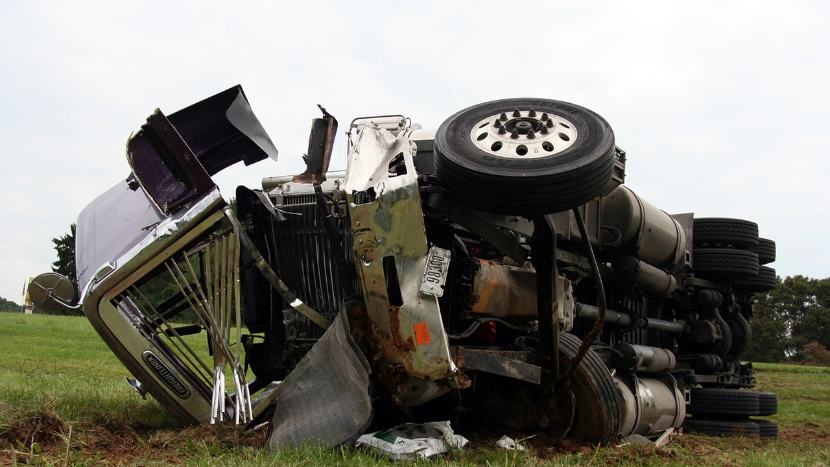“It’s what you do next that counts.” — Lisa Mackay
One of my favorite movies is The Great Waldo Pepper starring Robert Redford as a barnstorming pilot after World War I. One scene is seared into my memory. Waldo Pepper’s friend, Ezra Stiles, crashes during an air show. The crowd surges out to the wrecked plane, not to help Waldo save him, but to gawk. Someone in the crowd thoughtlessly flips a cigarette into the leaking airplane fuel, setting it ablaze. Ezra burns alive.
All that would be different now is that people in the crowd would all have their cell phones out, trying to record a video with the hope that it would go viral.
Shipping Hazardous Materials
Hazardous material is shipped across the country. Some of it is shipped by pipeline, the safest way to ship. Some of it is shipped by rail. And some of it is shipped by tank truck, the most hazardous way to ship.
The vast majority of hazardous material safely reaches its destination. Regardless of how it is shipped, however, there are sometimes accidents. The most likely accident involving hazardous material is a truck accident.
Unlike a truckload of furniture or Russet potatoes, a loss of containment from an accident involving a truckload of hazardous material may result in exposure of the public and the environment to really harmful vapors and liquids. It may be immediately, at the time of the accident. Or the release may not happen until responders (emergency and otherwise) get to the accident scene. It’s even possible that the emergency response itself is the cause of the release. In the best of possible scenarios, there may not be a release.
It all depends on what happens after the accident that counts.
A Recent Incident
A few weeks ago, in rural Missouri, a truck driver rolled his truck on a winding two-lane state highway. He was hauling phosphorus trichloride. Local first responders showed up. As you might imagine, first responders from rural Missouri counties, like first responders from rural counties across the county, do not have a lot of experience dealing with potential releases of phosphorus trichloride. In fact, there is not a lot of experience dealing with potential releases of most hazardous chemicals. But they managed, largely by calling in help from experts.
Fortunately, with the right expertise at the accident site, the response team was able to right the rolled truck without causing a release, and to move it to a more secure location. During the response, one of the most serious problems they dealt with was gawkers.
Gawkers
The Missouri State Highway Patrol blocked off the highway from both directions, redirecting traffic away from the crash site. My copy of the U.S. DoT’s Emergency Response Guidebook recommends that large spills of phosphorus trichloride be isolated 1500 feet in all directions, and that people up to 5 miles downwind of the spill be protected.
Unfortunately, the neighbors in that rural setting were not interested in being protected. While the highway was shut down, that didn’t keep some from hopping on their 4-wheel all-terrain vehicles and driving across farmland to the crash site so they could get a look for themselves. They felt confident that it was their right to know.
There is a certain irony is seeing people in blue jeans, flannel shirts, and their Cat Diesel Power caps with the brim backward sitting astride their ATVs within a short distance of emergency personnel wearing “fully encapsulated, vapor-protective clothing” and self-contained breathing apparatus, as recommended by the Emergency Response Guidebook. The sad thing, as is always the case when people choose to behave unsafely, is that their choices didn’t affect just them.
Unnecessary People
Perhaps the most important recommendation in the Emergency Response Guidebook, a recommendation it makes in every guide for all hazardous materials is “Keep unnecessary people away; isolate hazard area and deny entry.”
This is true for incidents on the road. But it is also true for incidents anywhere else, including in a process facility. When there is an incident, it’s natural to want to know what happened and what’s going on. We want first-hand knowledge. But does knowing help with dealing with the incident?
If you are not an active part of the response, but you are there, then at the very best, you are interfering with the response, becoming part of the crowd that must be controlled. Worse, you are a potential victim yourself, especially if the response takes a bad turn, who will require that emergency resources be redirected to your care. This is true for all of us, even uniformed public safety officials or process engineers with extensive knowledge. The question to ask yourself is not “Can I help?” The question to ask yourself is “What am I here to do?” If you do not have a specific, designated role in the emergency response, then you are just a gawker who is making the emergency response that much more difficult and possibly, making yourself a casualty.
